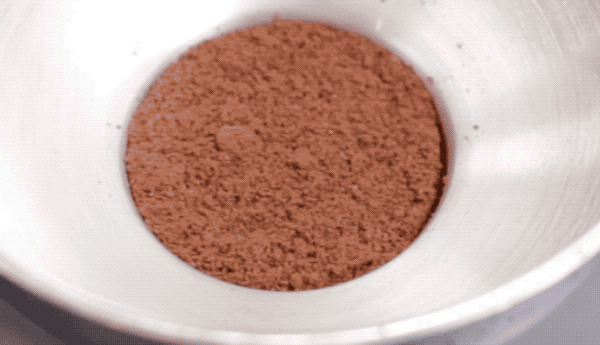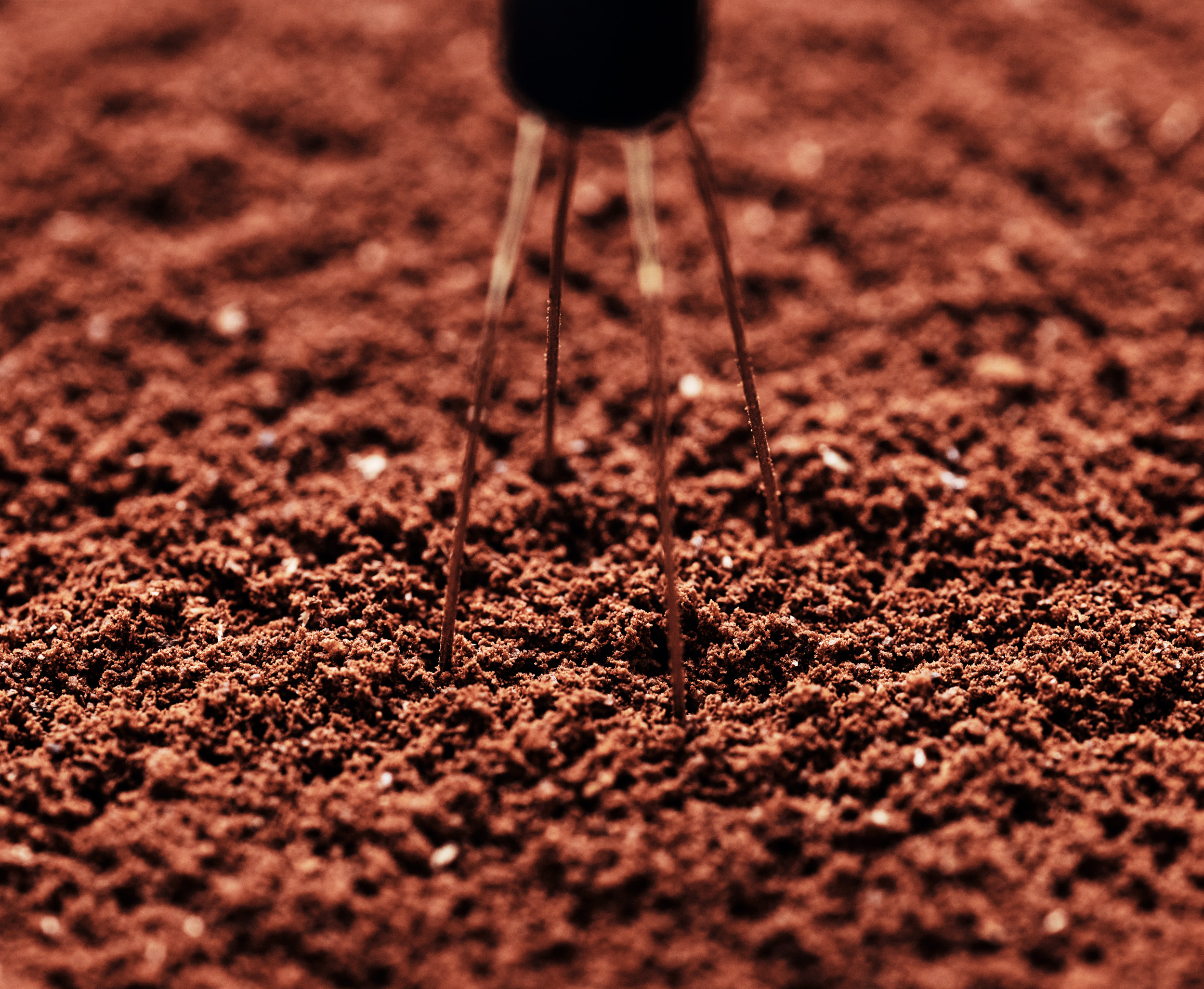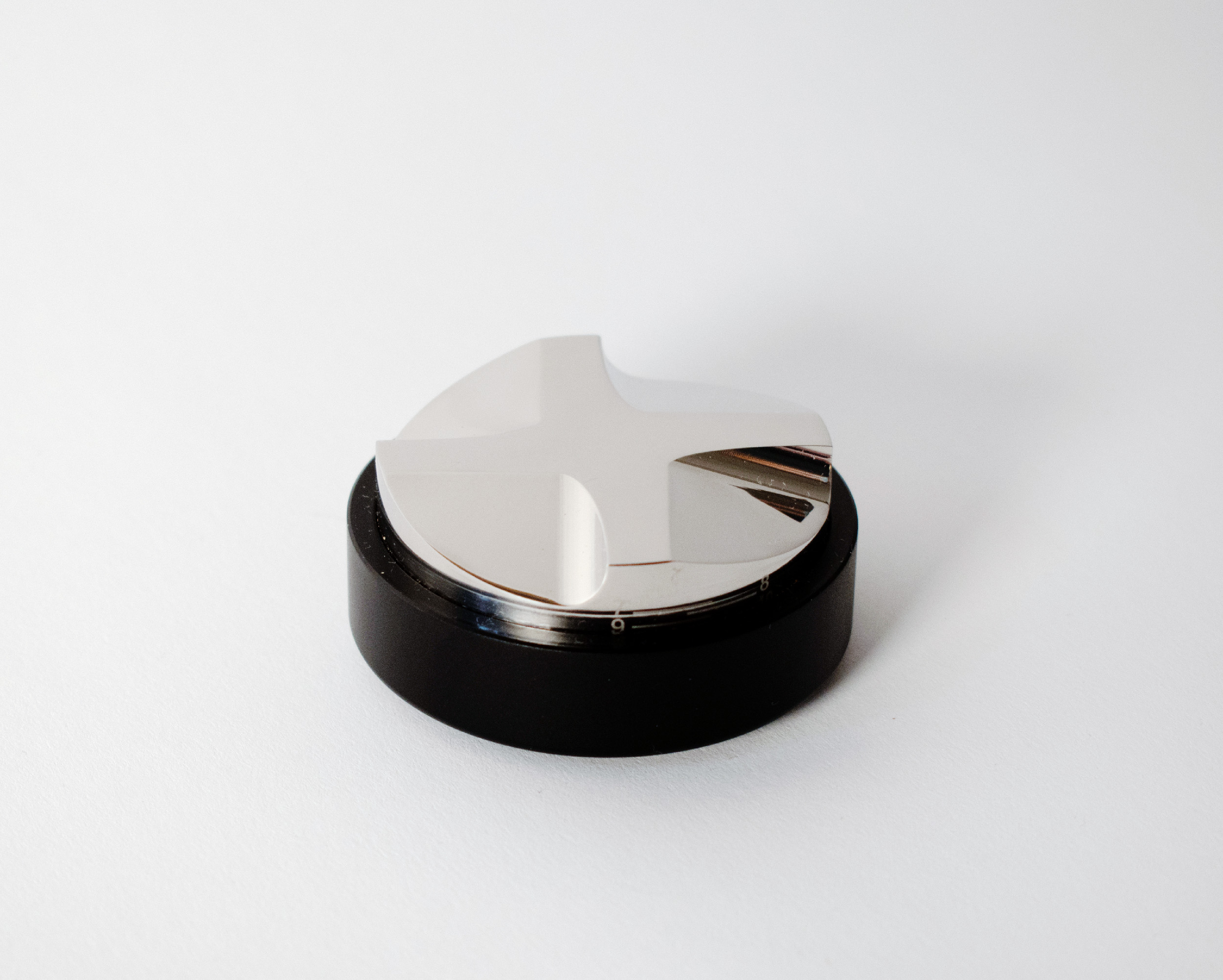Must we all be using the Weiss Distribution Process again? Is there a right way and a wrong way to execute it?
The Weiss Distribution procedure (WDT) is a distribution procedure for espresso coffee making. Using a fine needle or similar device, the barista stirs the coffee while it sits in the portafilter. A funnel placed above the portafilter assists prevent spills. The stirring action breaks up any clumps, and evens out the density of coffee within the puck. The result is reduced channelling, and higher, more even extractions.
 The Weiss Distribution Recipe in action.
The Weiss Distribution Recipe in action.
The WDT is named for John Weiss, who developed the method back in 2005 as a way to compensate for grinders, especially smaller home grinders, that produced excessive clumps. The WDT became well-known among home baristas, and was written about extensively in the years since then.
Commercial and ‘prosumer’ grinders primarily include features designed to break up large clumps and distribute the coffee more uniformly into the basket, directly from the grinder. While some grinders achieve this more effectively than others, it was mainly thought to make the WDT unnecessary. For this reason, and likewise because of the time it adds to the workflow, the WDT is extremely rarely used by professional baristas.
By measuring pressure and flow inside the puck, we can see which techniques produce a more stable puck, and which are more prone to cause microchannelling. By this measure, the WDT seems to be highly effective.
What Does WDT Do?
Perhaps the person most responsible for bringing discussions of WDT back into the mainstream is Scott Rao, who used versions of the procedure as part of a strategy to achieve extremely high extractions. We asked him what it was that convinced him that the WDT was the many effective distribution procedure.

A WDT tool. Numerous manufacturers sell tools “love this one, designed to make the Weiss Distribution Process easier and faster.
“The most compelling evidence for the efficacy of WDT is reduction in channelling,” Scott says. “When you work with WDT well, you cannot only see a decrease in channelling but all else being equal, your shots should flow a little slower, which is a side effect of decreased channelling.”
Channels can be detected by looking at extraction curves. Increased resistance in the puck is an indication that the particles are packed more closely together, which is a key characteristic of a well-distributed puck. In a flow profiling machine, higher resistance leads to higher pressure at the puck. “With WDT, we can see shots have a higher peak pressure and sustain it longer,” writes John Buckman, the inventor and owner of Decent Espresso coffee. “The improvement in shot quality is obvious.”
The genuine test is the flavor and consistency of the shots made using the technique, nevertheless. “In the cup, using WDT must decrease the average amount of bitterness and astringency, and should make shot times and extraction levels less variable,” Rao says.
What is the Optimal Method?
The first consideration when adopting WDT is using the right tool. Our testing provides suggested that anything more than 1mm in diameter is counterproductive, so a toothpick, for example, would not be suitable.
It’s likewise important to stir carefully and evenly throughout the bed. “It’s easy to cause uneven density throughout the coffee bed if you conduct WDT sloppily or too aggressively”, Rao says.
There is debate about whether it is preferable to stir only the grounds at the surface, sometimes referred to as ‘puck raking’, or to stir right to the bottom of the basket, known as ‘deep WDT’. In a recent White Paper published on Barista Hustle, coffee blogger (and astrophysicist) Jonathan Gagne compared the two methods, using puck resistance as a measure of how effective the method was.
He found that stirring right to the bottom of the puck led to higher puck resistance overall, and more importantly, less variation in the resistance from one shot to the next. This suggests that deep WDT is more effective than puck raking.
While deep WDT may be more effective, both techniques are effective compared to other distribution methods, and puck raking is easier, Buckman argues. “Gagne’s effects are convincing, but the improvement going to the bottom is slight”.
Nonetheless, the difference in effectiveness was enough to convince Rao, who had previously argued that puck raking was superior. “The reason I believed that for a little while was likely because I wasn’t doing the WDT well enough,” Rao says.

A distribution tool. Distribution tools enjoy” this create a flat surface for tamping, but generally conduct” not seem to affect the distribution of coffee lower in the puck.
This post was written based on an idea from Barista Hustle, an advanced coffee information website and online Barista training.